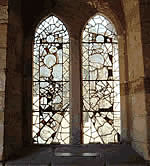 St Mary's Church, Dymock
St Mary's Church, Dymock
| Admin | |||
| . | Home | Contents | |
| H&S Policy | People Safety | Grave Yard | |
The Church & The World
Faith & Care
Faith & Care
Things Past
People & Features
People & Features
Kempe Stained Glass Windows
Charles Eamer Kempe
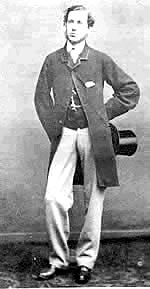
.
Kempe was born on the 29th June 1837 and died in 1907. His ambition was to become a clergyman, but he was a shy man and stammered. On going up to Pembroke College, he realised that he was not to serve in the sanctuary so he decided to decorate it. He established his glassworks in London - The Kempe Studio - in 1869, producing stained glass and other decorative features, mainly for churches. He is associated with the Arts and Crafts Movement. He never married and was happiest when with his workmen, whom he would entertain in his beautiful home 'Old Place' at Lindfield in Sussex.
North Transept
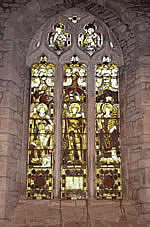
(Return to top)
East Window
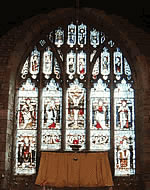
South Transept

.
Standing at the head of the nave between the two transepts, it's clear how Kempe's style changes through time: the oldest on your left in the North Transept is the darkest, straight ahead the East window is a little lighter and in the South Transept light pours through. (Return to Top)
Sanctuary

Kempe Glass Elsewhere
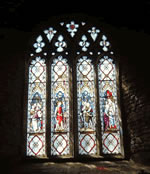
Dymock Chancel
(Not Kempe's)
Non-Kempe Glass
